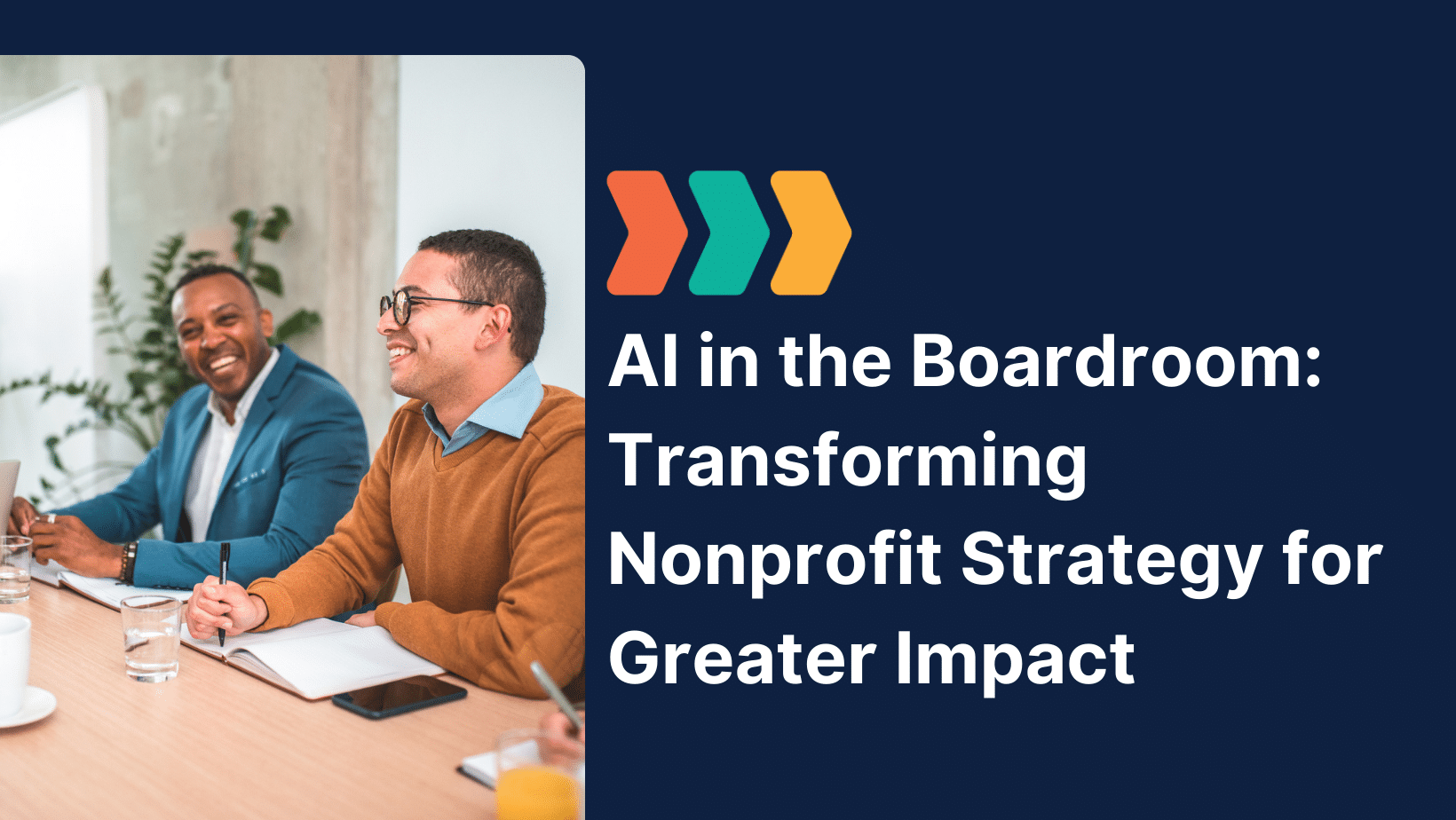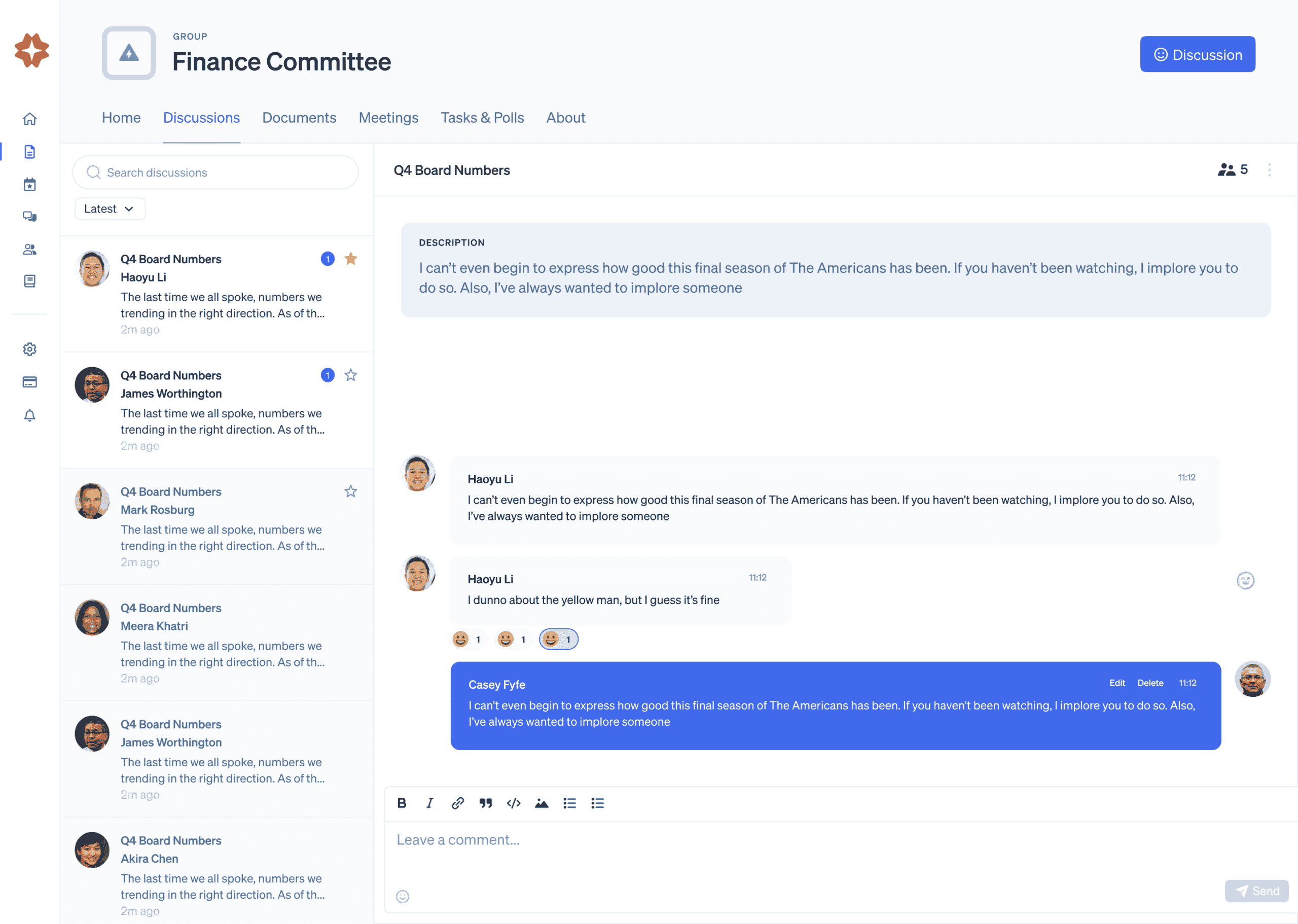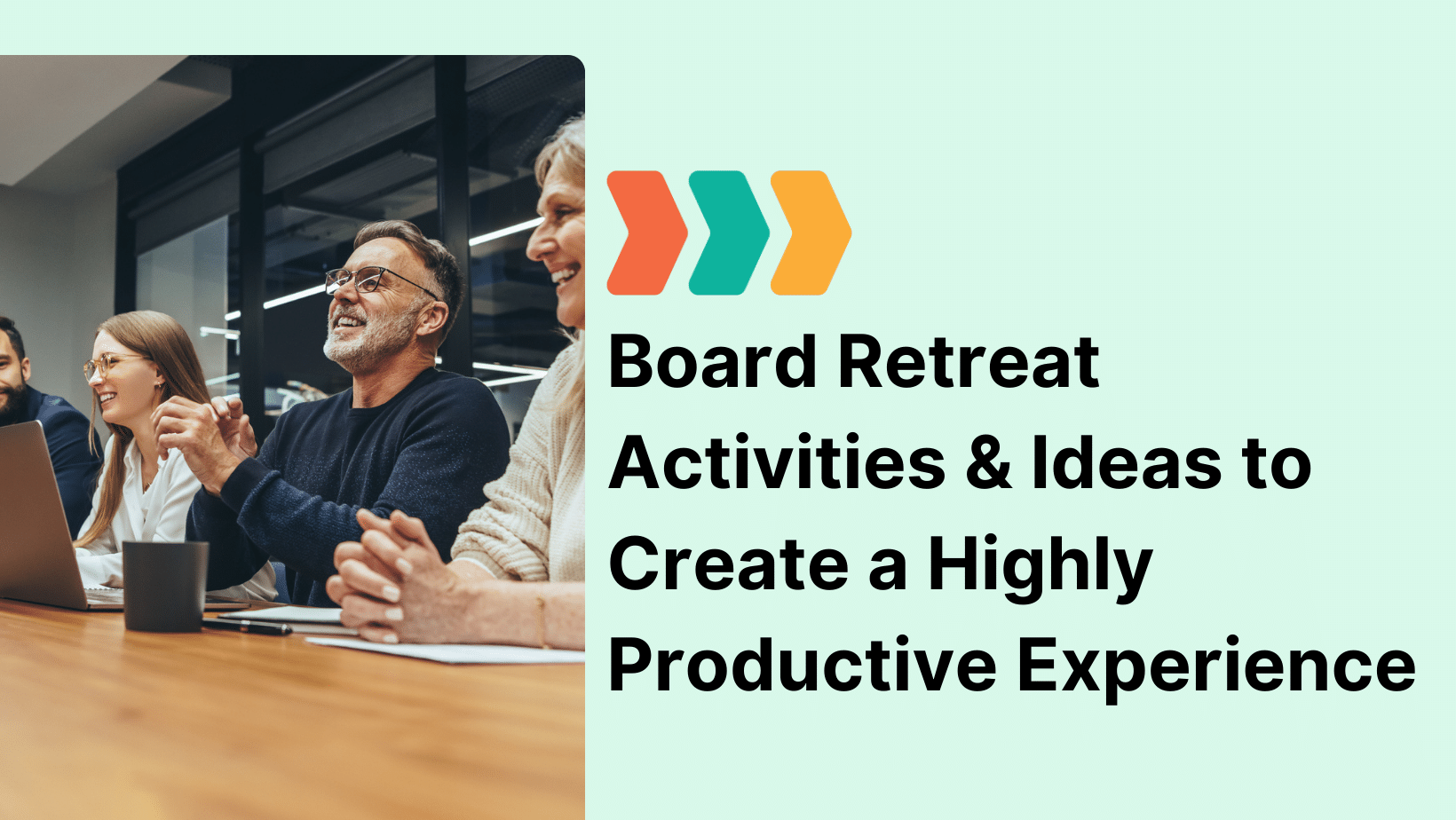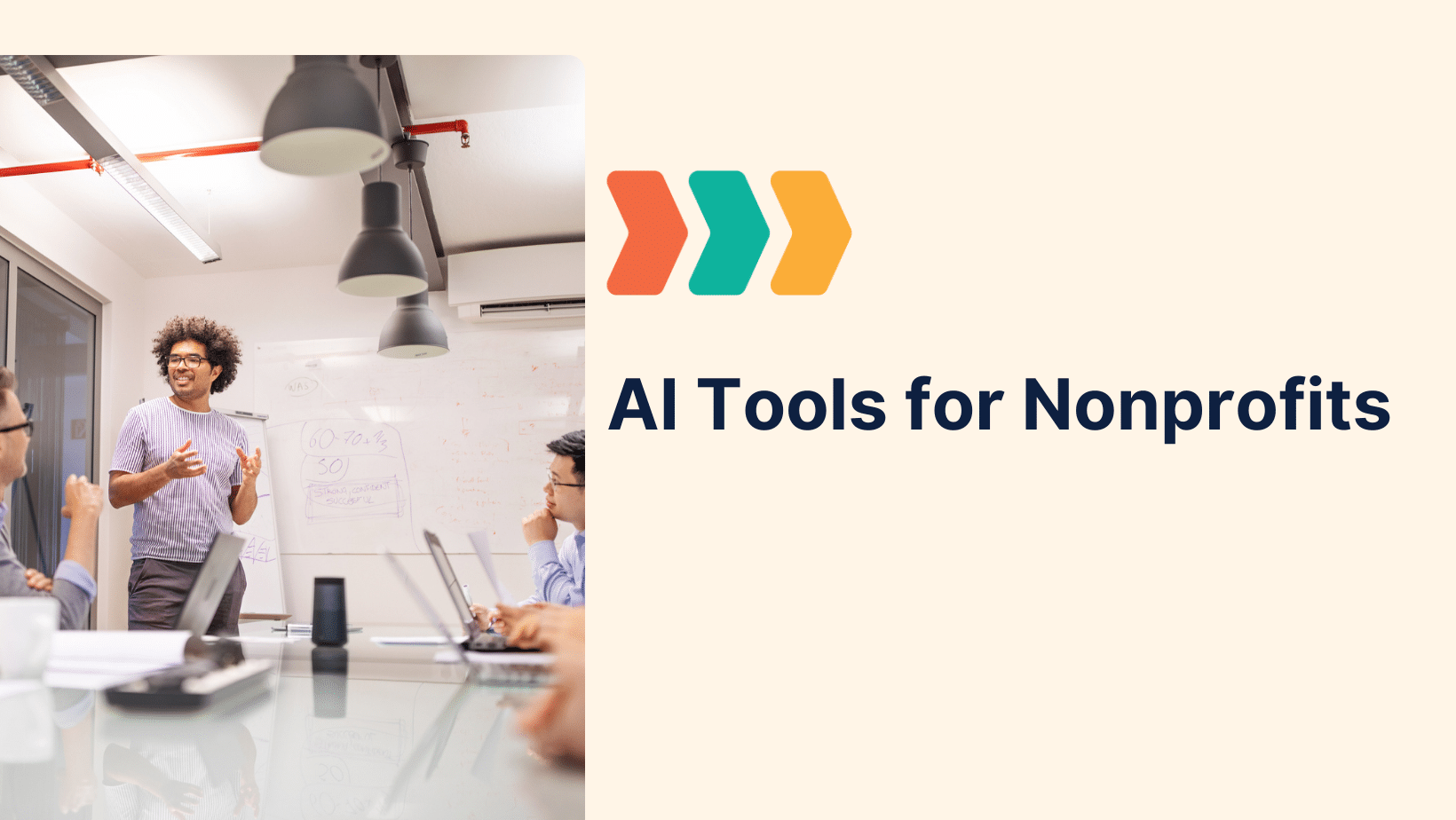Artificial intelligence now dominates conversations in company and nonprofit boardrooms. Organizations have considered AI adoption for years. Yet, the generative AI surge has renewed conversations about its role in supporting nonprofit organizations. Whether that’s AI in the boardroom or automation on the front lines, we’re seeing it now more than ever.
Naturally, this breeds questions about AI’s potential promise and peril.
- How could I use AI in my organization right now?
- Am I missing out on AI’s true benefits?
- What risks exist with using AI?
- How do I prepare and train my team to use AI?
Nonprofit organizations often carry ambitious goals but also manage tighter resource needs and governance structures. As such, they have a vested interest in understanding and using AI. Nonprofit executives already face many questions about AI in their organizations, and it’s tough to pick where to begin.
The boardroom offers a compelling place to start.
Inviting AI into the Boardroom: A Progressive and Prudent Approach to Stay Ahead
On the lengthy to-do lists of nonprofit executives lives board management. That includes regular board meetings, of course. But it also includes copious documentation, note-taking, preparation and follow-up work.
Board management also includes a broader role in guiding organizations through change. Board members and nonprofit executives carry responsibilities like visioning, strategic planning, and outcome evaluation. They are there to guide their organizations into the future, including the question of AI adoption.
AI has already created a significant impact within for-profit companies. Streamlining operations and deploying data analytics are already happening in corporate boardrooms.
At Boardable, we’ve seen AI help nonprofits achieve more, including:
- Automating basic customer support with always-on AI chatbots
- Identifying best-fit donors and personalizing outreach and engagement
- Boosting volunteer retention by matching them with opportunities befitting their unique talents
- Analyzing and sharing real-time crisis and disaster information to better share scarce resources
- Processing data stores and generating insights to improve program and service delivery
Imagine a director of development preparing for her year-end gift solicitations. She has a lengthy list of potential donors and wants to craft solicitation mailers that mention their favorite program or another personal touch. Crafting those mailers manually would be too time- and labor-intensive.
However, with AI, her great idea quickly becomes reality. AI tools can segment donor lists on criteria like preferred programs or surface other donor insights. Models like ChatGPT (or nonprofit-specific tools like Boardable AI) can draft personalized letters in minutes. She might try a few prompts to tweak the writing voice or highlight specific outcome metrics. But she’s saved days of work while still creating personalized letters to excite her donors.
Nonprofit organizations should welcome AI in the boardroom and use it to support their workflows. Yet, a prudent approach helps balance benefits and concerns. Organizations can gradually introduce AI into their operations. Over time, you then build upon those early successes while nurturing trust in AI.
AI Adoption is Going Mainstream: Taking the Impactful First Step with Your Board
People have talked about adopting AI for years. But, generative AI recently reinvigorated adoption worldwide. McKinsey found that, in 2024, 72% of organizations had adopted AI in at least one business function. That’s up from 55% one year ago. Companies have embraced generative AI, deploying its capabilities for use cases like:
- Content support for marketing strategy
- Scientific literature and research reviews
- Sales lead identification and prioritization
- Helpdesk and customer support chatbots
- Data management
More companies are taking the leap with AI and pushing it mainstream. They can afford to shed poorly performing options and reinvest in what works. That moat will only increase with time.
While you’ll benefit from a prudent adoption approach, now’s the time to begin taking action. You don’t have to do everything at once. Identify your best use cases and introduce AI in the boardroom as a place to launch your experiment.
How AI Can Contribute to Decision-Making and Governance for Nonprofit Boards
Leaders are feeling decision fatigue. Research from Oracle and NYT bestselling author Seth Stephens-Davidowitz found 85% of business leaders have experienced decision stress. Additionally, 75% saw a tenfold increase in daily decision volume over the last three years. With more and faster decisions to make, leaders are under incredible pressure.
This decision explosion affects organizations of all kinds, nonprofits included. Nonprofit executives also face budgeting and staffing challenges that add more decisions.
Plus, board members often hold other prestigious jobs and other board appointments. Their time is equally limited and valuable. With limited time, they make big decisions and govern the organization’s strategy.
AI can supplement the technology that boards already use. The right tools can reduce the burdens of decision-making and governance. Board members can then focus on the most vital part of their roles: leading. Specifically, top board management tools can:
- Organize access to information like bylaws, meeting agendas and minutes, and policy manuals
- Track and report on program KPIs for board assessments and strategic planning
- Communicate clearly using centralized channels everyone can access
- Identify current and emergent risks and help mitigate them early
- Direct board member training and development with the appropriate resources
AI’s support helps leaders meet their decision-making and governance needs. Plus, leaders can foster an informed and proactive board equipped with vital resources.
2 Methods to Use AI in the Boardroom Today
Nonprofit executives face mounting board management challenges. Common ones include:
- Limited access to information
- Lack of accountability
- Lagging follow-through
- Inefficient communications
Those challenges lead to frustrating board experiences. Over time, they hamper board effectiveness, lower engagement, and wear out staff and executives.
Integrated AI in the boardroom can address and improve those challenges. Let’s consider two key examples.
Preparing and Running Board Meetings
Executive directors (ED’s) often sink considerable resources into preparing an effective board meeting. They want meetings to go well while the board accomplishes its strategic goals. But the investment into preparing for these meetings may feel too high.
AI-driven automation can help ED’s prepare and manage more efficient board meetings. Functions like automated scheduling identify the best meeting dates and times. Generative AI can collate notes from previous meetings to build useful agendas.
Imagine an executive director prepping for the largest board meeting of the year. If she follows best practices for board meeting agenda, then she’s balancing creating an informative agenda without overwhelming board members. The largest board meeting entails making many significant decisions on budget, staffing, and program continuation. By herself, she’d manually summarize lengthy reports, set the optimal packet length, and try balancing time between tactical reporting versus strategic decision-making.
Instead, she can turn to AI for help. AI can handle tactical details like finding the best meeting date and time between her many board members. Boardable AI can review past notes and build that balanced agenda, following best practices distilled from thousands of nonprofit experiences. Long reports transform into key insights, so her board can reach their most important decisions faster.
Boardable’s AI Assistant can also transcribe the meetings. This frees human staff to more fully engage with the board. Afterward, participants receive automated meeting summaries. AI then follows up with automated task notifications and regular completion reminders.
Analyzing Data for Key Insights
Board members make critical decisions, yet the processes behind decision-making can be time-consuming. Even the best-written progress reports may get skimmed in a pinch. Nonprofit organizations also use more tools to capture data. That makes it even tougher to sort good data from the rest and use it.
ED’s can lean on trusted vendors and provide AI with key organizational data. The model can analyze these data far faster than humans alone. Common data sources include:
- Financial data like budgets and cash-flow statements
- Donor and fundraising data like donation patterns and campaign performance
- Program impact data on outcomes and effectiveness metrics
- Volunteer data on hours and engagement levels
- Operational data, such as resource allocation and process effectiveness
- Stakeholder feedback from beneficiaries, donors, partners, staff, and board members
Well-fed AI then generates strategic insights and tactics to share with the board. Board members and staff can recover from decision fatigue. Instead, AI supports them with clear actions, supported by owned organizational data.
Artificial Intelligence Ethical Standards
We’ve covered AI’s many benefits. Still, leaders may be cautious about AI. They’re considering where it fits and how changes might affect human talent:
- Will AI replace or displace human workers?
- Can I trust AI with my organization’s data?
- What ethical and moral challenges might AI pose to my organization?
- What legal or other concerns are worth considering?
Boards make key decisions that can affect thousands of employees and program beneficiaries. It’s natural to be wary of a new technology’s implications. Plus, leaders have a responsibility to manage and mitigate organizational risk. That now includes AI’s benefits, limitations, and risks.
To be clear, AI does not think. That remains the domain of human leaders. Wise use of AI in the boardroom does not mean replacing humans. People should still provide guidance, forethought, planning, and decision-making.
What sets apart human decisions from AI processing? Humans can use valuable creative and analytical thinking skills that AI does not possess. For instance, AI can crunch datasets on volunteer engagement and provide high-level data-backed insights. But humans can think beyond the data. Those AI insights can inform programmatic decisions, but they don’t replace human intuition, knowledge, and conversations.
That said, AI can provide data-backed insights to inform smarter, more ethical decisions. Common and unseen biases can affect how humans interpret data, which can creep into a board’s decision-making process.
AI’s more logical approach to data and analytics can help humans make decisions amid biases. An AI tool is not trying to make board members or donors happy. Using AI as a partner for data-driven insights offers a fresh pair of “eyes” on decisions, which organizations would benefit from.
Planning to Use AI Responsibly
It’s okay to be excited or skeptical about AI. But leaders still have an obligation to understand AI and decide if and where they use it. Detailed AI governance and management plans direct the responsible use of AI organizationally. These plans should address key decisions, risks, and expected outcomes, such as:
- Clear directives to review AI’s output for accuracy
- Directions on which AI tools are appropriate for certain organizational use cases
- Definitions on where to use AI operationally, such as for policy and research reviews
- Policies and procedures for handling training data and managing data privacy and security
- Plans to regularly review outcomes and address emerging challenges
Leaders should build this plan together. Use board meetings and committee time to research and develop the right plan for you. As AI spreads throughout your organization, you can confidently guide and manage deployment.
The Tip of the Iceberg: Artificial Intelligence Will Drive Board’s Digital Transformation
We’re still in the early stages of AI adoption. Over time, this technology will mature, and companies will put it to work in more use cases. Much potential remains hidden below the surface. That leaves lots of opportunities for early adopters to gain the most from AI.
Nonprofit boards must consider the future. It’s part of their role to set up their organizations to meet change head-on. The digital transformation of work is already well underway. AI is the next step in this transformation.
Board members and executives handle organizational governance. That means they should explore AI’s impact on their teams. The work in the boardroom offers a place to explore technological innovations. Begin incorporating AI in the boardroom by:
- Setting strategic priorities and analyzing AI’s benefit and potential risks
- Trying vetted solutions like Boardable’s Nonprofit AI Consultant. It’s trained on nonprofit-specific data and outcomes
- Implementing AI to address one specific business use case
- Assessing outcomes and feedback to mitigate risks early
AI will soon be a regular invitee to your board meetings. Prepare your organization by investing today in the best tools, technologies, and practices.




